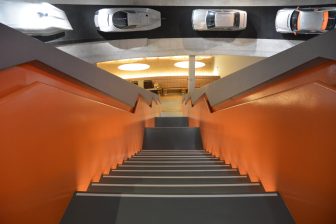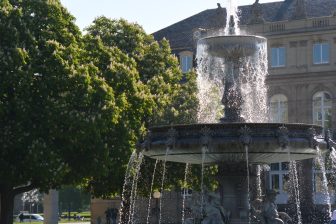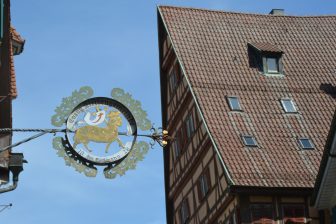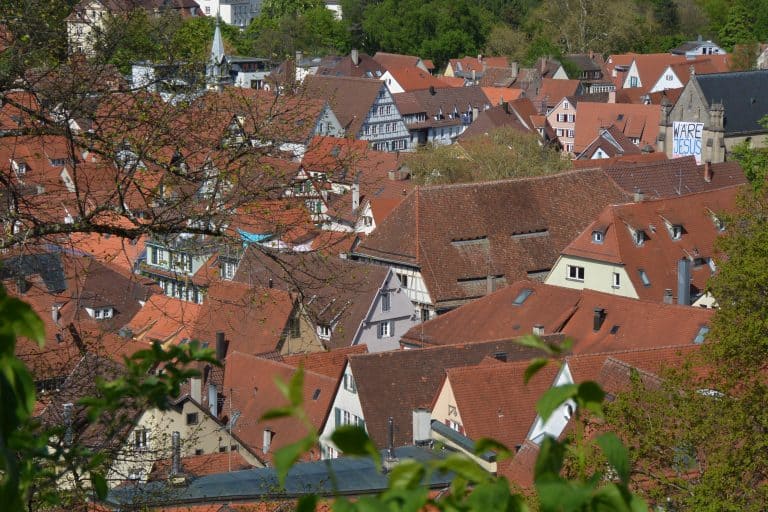
[Apr. 2025] In Tübingen, southern Germany, there’s a castle called Hohentübingen Castle, perched atop a hill.
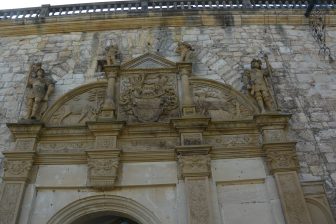
We went up there because we read that it offered a spectacular view of the old town and the Neckar River.
The castle apparently dates back to 1078.
Originally a defensive outpost, it was remodelled into a Renaissance-style residence in the 16th century.
It apparently belonged to the Duke of Württemberg, who held power in the region and was based in Stuttgart.
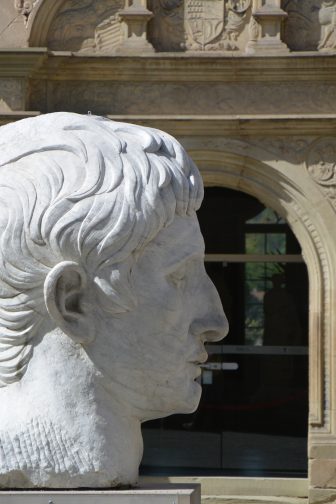
Entering the sturdy-looking stone gate leads to a spacious courtyard with a statue of a human face in the centre.
The statue is of Roman Emperor Augustus, made of Carrara marble and weighing over five tons.
Actually, it’s not an ancient statue; it was made fairly recently and is part of the collection of the University of Tübingen.
This castle has belonged to the University of Tübingen since 1812, and apparently houses the Museum of Ancient History.
We were not interested in the history museum, so we skipped in and instead looked for a spot with a great view.
However, we couldn’t find a spot with a spectacular view.
My husband said, “It’s all roofs, not very interesting.”
I like the view of the brick-coloured roofs, so I could enjoyed it, though.
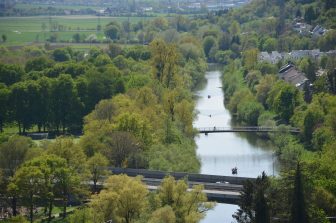
Apparently, there was a spot from which you could see the Neckar River.
I didn’t see it myself, but my husband took some photos.
That’s about all I can say about the castle.
If I may add, I was impressed by the timber frame supporting the corridor that extended out into the courtyard.
Also, there was a sign near the gate that said, “In the kitchen of this castle, Friedrich Miescher from Basel, Switzerland, isolated nuclein, the basis for DNA research, in 1869.”
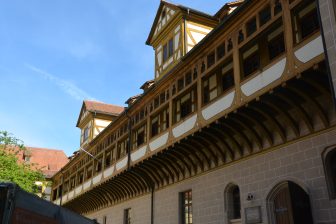
The fact that he used the kitchen was impressive, but I was also surprised to learn that DNA research had been taking place there since the mid-19th century.
Well, Tübingen also has several other museums to see according to the online information.
But the city’s greatest draw is the Old Town, where you can enjoy a stroll around aimlessly.
It would be nice to stay overnight and wander around.

